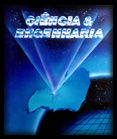USE OF EXPERIMENTAL DESIGN TECHNIQUES IN THE OBTAINMENT OF CHARCOAL FROM PINE NUT (Araucaria angustifolia) FOR THE ADSORPTION OF METHYLENE BLUE DYE
Abstract
There are more than 100,000 dyes commercially available and more than 7×105 tons of this dyes are produced annually, with a sizable fraction being dumped directly in the aqueous effluents (KHANDEGAR; SAROHA, 2013), and the methylene blue is among these dyes. The present work aims at obtaining an alternative adsorbent material, produced from the sintering of the pine nuts shells (seeds shells of Araucaria angustifolia), evaluating the influence of different process parameters through the use of experimental planning techniques and the feasibility of its use as low cost adsorbent for removing two contaminants of water resources (methylene blue). This study showed the best performance at the temperature of 300ºC, time of 15 minutes and mass of charcoal of 8.0g. It was obtained a yield of 8% of charcoal from the shells, and its application showed to be efficient, with adsorption of dye exceeding 80%. Keywords: Response Surface Methodology (RSM); methylene blue; adsorption; experimental design.Downloads
Download data is not yet available.
Downloads
Published
2016-10-28
Issue
Section
Chemistry


